I have some text data as follows.
{"Timestamp": "Tue Apr 07 00:32:29 EDT 2015",Title: Indian Herald: India's Latest News, Business, Sport, Weather, Travel, Technology, Entertainment, Politics, Finance <br><br>Product: Gecko<br>CPUs: 8<br>Language: en-GB"}
From the below text, I am extracting title only (Indian Herald: India's Latest News, Business, Sport, Weather, Travel, Technology, Entertainment, Politics, Finance) using the following regular expression:
appcodename = re.search(r'Title: ((?:(?!<br>).)+)', message).group(1)
I am trying to understand how the above regular expression works.
(?!<br>) is a negative lookahead for <br>
(?:(?!<br>).)+) - what does this mean? Can someone break it down for me.
Also, how many capture groups are there in the regular expression.
